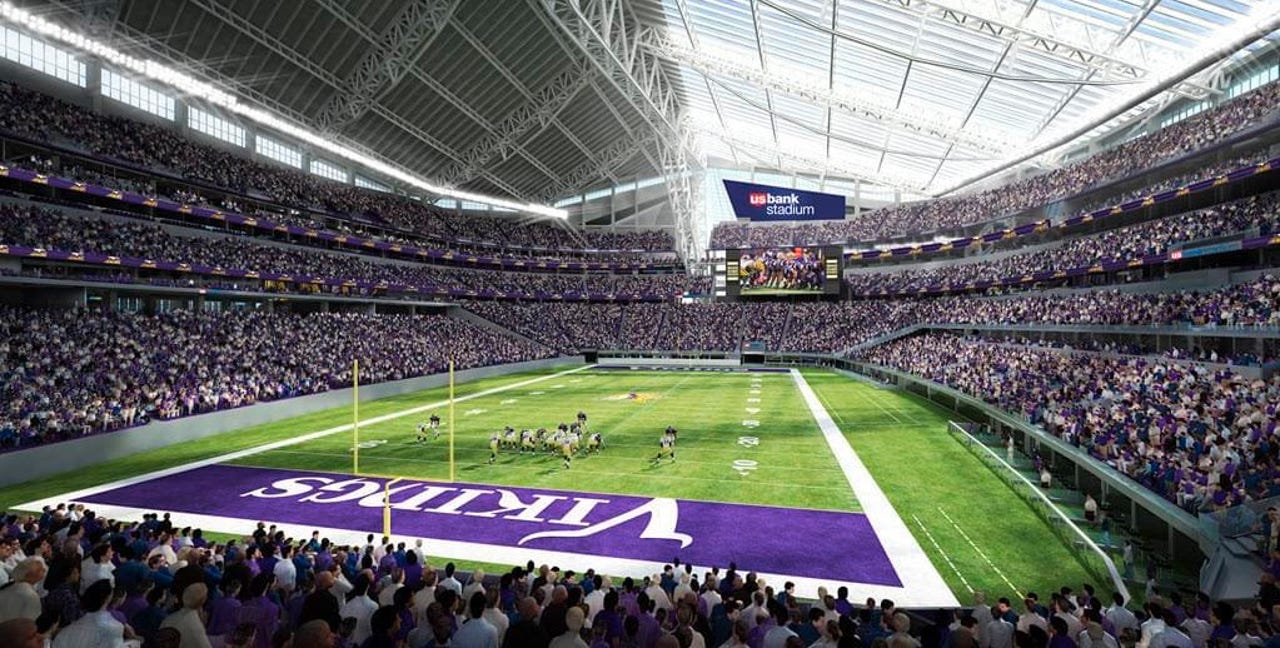3 things you can learn from the NFL about digital transformation


Two years ago, the National Football League was seriously concerned about the fact that Millennials weren't coming to stadiums. However, as TechRepublic recently reported in a new long form story, America's premier sports league has buttressed itself against that trend with two moves:
- A concerted effort to put high-density, high-bandwidth Wi-Fi in all but two of the stadiums in the league
- Powerful mobile apps that have dramatically enhanced the in-stadium experience for customers
You can read the full cover story on TechRepublic, or you can download it as a free PDF in magazine format (registration required).
The NFL has pulled this off at a time when a number of trends have been conspiring against people coming to its games:
- The total cost of attending an NFL game has soared to almost $500.
- Millennials' wages aren't keeping up with previous generations, giving them less disposable income.
- The cost of 50-inch high definition TVs has plunged to under $1,000, and with programming like the NFL Sunday Ticket customers can now watch any live game on any TV or mobile device.
- The NFL has come under increasing scrutiny in recent years over not doing enough to protect players from concussions. The bad publicity reached a crescendo with the release of the movie Concussion, starring Will Smith, at the end of 2015.
Sailing into these headwinds, the NFL has turned around sagging attendance from 2009 and 2010 and returned to the levels it was seeing in 2008 before the Great Recession. And, when you compare the NFL's average attendance per game to other sports leagues, it's not even close:
- NFL: 68,000
- Bundesliga (German football): 42,000
- Premier League (English football): 36,000
- Major League Baseball: 30,000
- Nippon Professional Baseball (Japan): 28,000
- National Basketball Association: 18,000
- National Hockey League: 17,000
The NFL also remains the most profitable sports league in the world, as you can see in the chart below:
How has the NFL managed to retain its edge, and what can you learn from it? Here are three important lessons that any virtually any company can use:
1. Stay out in front of demographic changes
When the NFL realized many Millennials weren't coming to games and the ones that did weren't happy with the experience, the league could have easily written it off as a short term trend that didn't have much meaning. It could have focused on its older, well-heeled demographics and argued that Millennials would come around once they were making more money. Instead, the NFL took it as a harbinger of changing consumer tastes and invested heavily in Wi-Fi, mobile apps, and social media. As it turned out, the things Millennials wanted in 2014 are the things that virtually all demographics want in 2016. And now, the NFL is out in front of the trends.
2. Empower your customers with data
Businesses of all sizes are buckling under the amount of data they generate. But, while the amount of data is larger than ever and growing exponentially--and it won't slow any time soon--the same timeless data strategy still applies. Find the data that reveals the levers to change your business, and ignore or archive the rest. Today, especially thanks to the Internet of Things, some of those data levers can be things that enhance the customer experience. For example, some the apps that NFL teams and their stadiums are using will now show you how long the wait is at the nearest bathrooms, will present you with discounted offers to upgrade to premium seats as soon as you enter the stadium with your smartphone, and can even allow you to order your favorite drinks and snacks straight from an app and have them delivered so that you can stay in your seat and enjoy the game.
3. Don't be afraid to replace sacred temples
Over the past decade, NFL teams has torn down several of the league's most famous stadiums including the Orange Bowl in Miami, Texas Stadium in Dallas, the Hoosier Dome in Indianapolis, and Candlestick Park in San Francisco. All of these places had amazing history and legacy, but they had to be cast aside in expensive and time-consuming projects that forced their respective companies to build, plan, and re-configure for the future. The new stadiums have built on the success of the past and taken it even further. AT&T Stadium in Dallas broke new ground in gigantic high definition displays and the team leads the NFL in attendance with 91,000 spectators per game. The 49ers' Levi's Stadium has set new standards in Wi-Fi and creating a connected experience for fans, as detailed in the new TechRepublic feature. One of the toughest decisions to make in any business is knowing when to leave a strong legacy behind and build on it to make a stronger future. NFL teams offer great examples of how and when to get it done.
Again, to read the full story about the NFL's digital transformation, see TechRepublic's in-depth feature or download it as a PDF.
ZDNet Monday Morning Opener
The Monday Morning Opener is our opening salvo for the week in tech. Since we run a global site, this editorial publishes on Monday at 8:00am AEST in Sydney, Australia, which is 6:00pm Eastern Time on Sunday in the US. It is written by a member of ZDNet's global editorial board, which is comprised of our lead editors across Asia, Australia, Europe, and the US.
Previously on Monday Morning Opener:
- Among enterprise tech giants, pragmatic innovation takes over
- Census 2016: A case study in the confluence of failure
- The dirtiest little secret about big data: Jobs
- Windows 10, Android, iOS, and the billion user question
- With AWS on deck, cloud rivals eye margin improvements, platform plays
- Why Trump and Brexit are an indictment of the tech industry and its worldview
- The internet as battleground: Where do we go from here?
- Apple winning the enterprise security race, Samsung makes push
- Tech after Brexit: Where do we go from here?